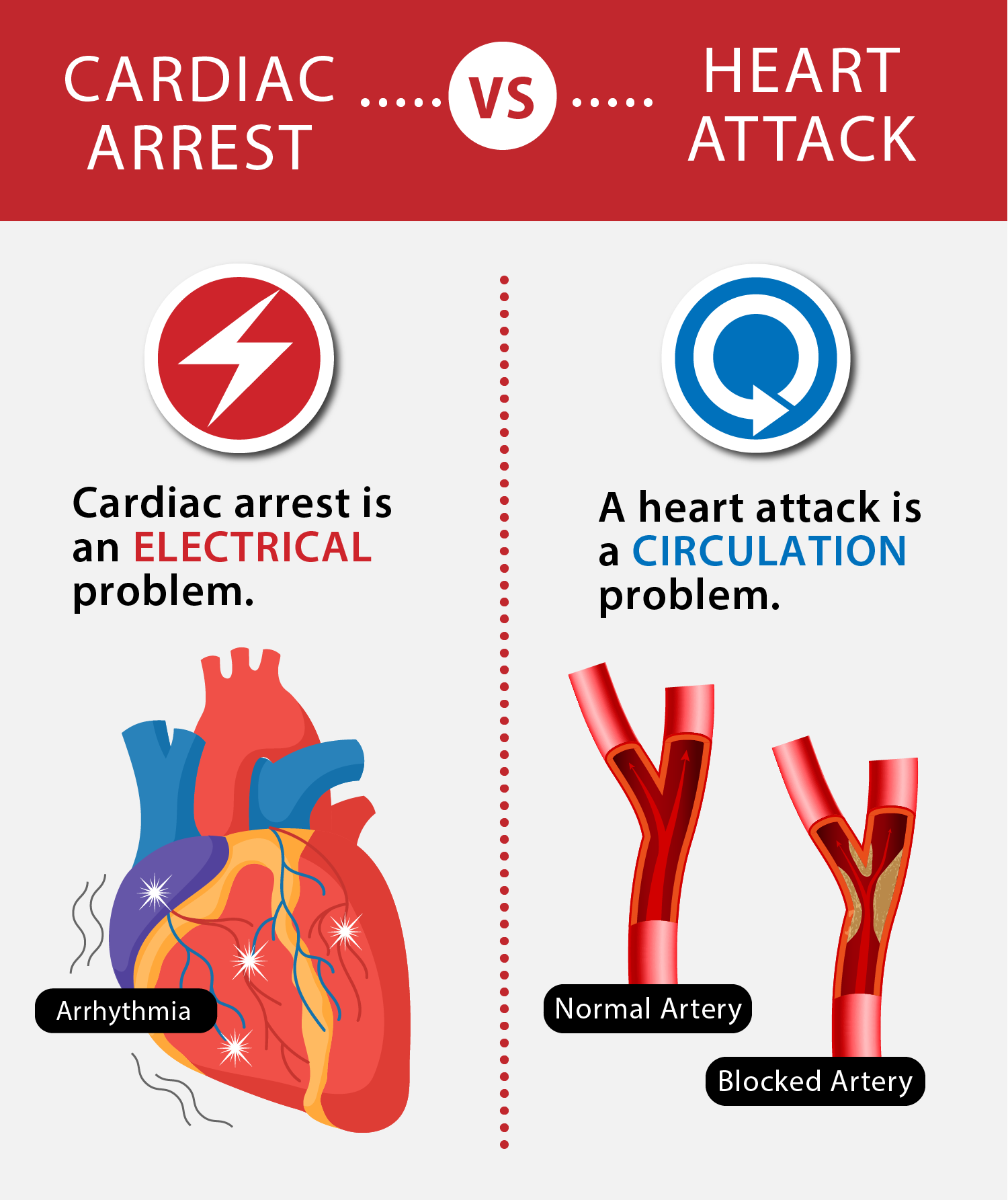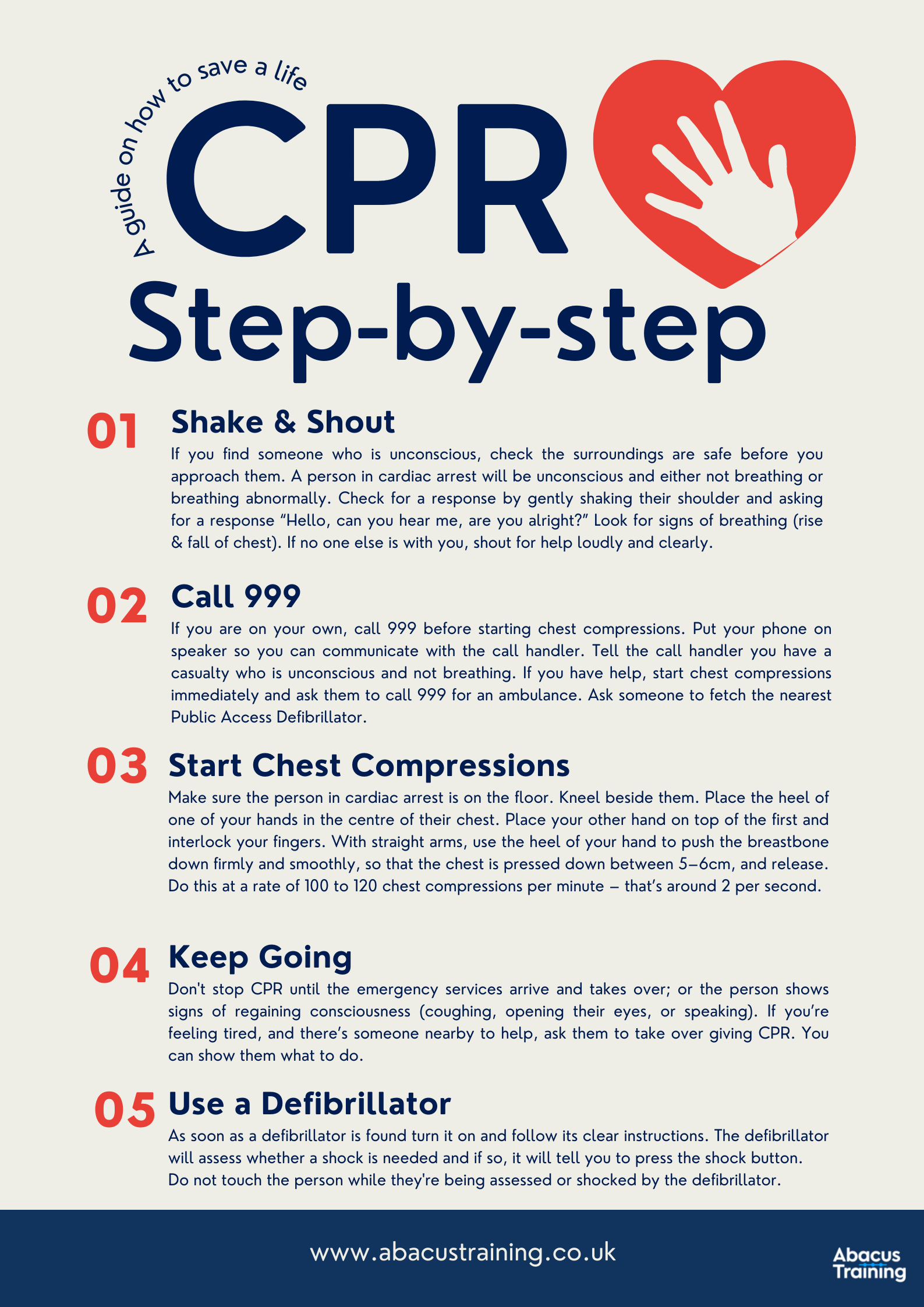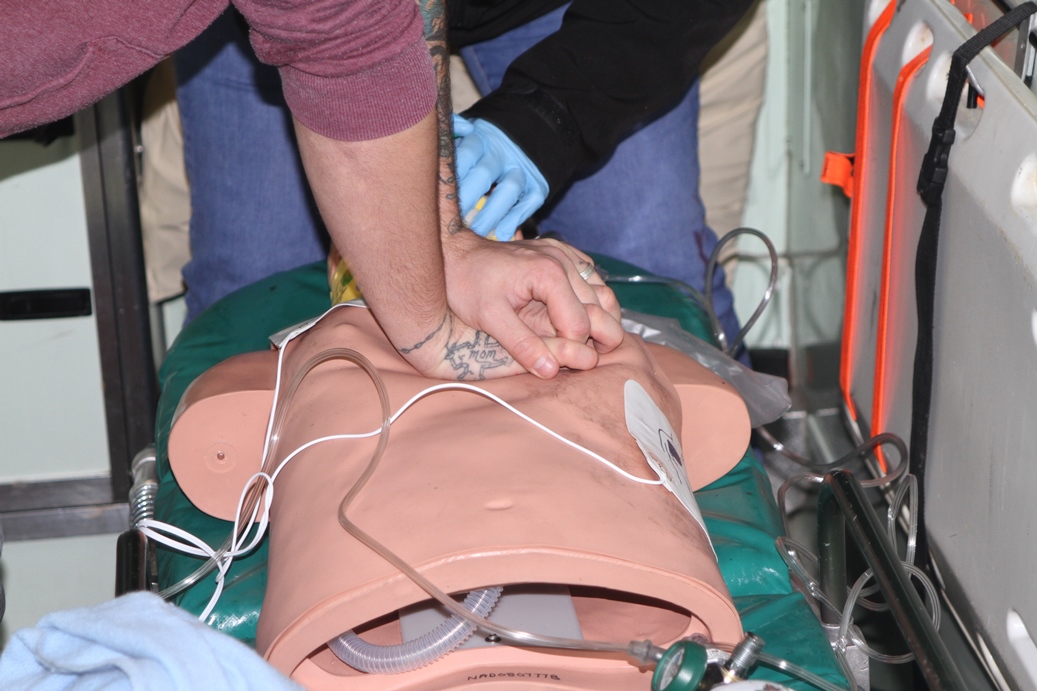What is CPR?
CPR is a lifesaving medical procedure which is given to someone who is in cardiac arrest.
CPR stands for CardioPulmonary Pesuscitation.
It is an emergency procedure than involves giving chest compressions to a person in cardiac arrest to keep them alive until emergency help arrives. (5 Steps)
What is cardiac arrest?
Cardiac arrest is caused by a sudden electrical malfunction in the heart which means it cannot pump blood around the body and the brain, lungs and other vital organs are starved of oxygen. Cardiac arrest is often fatal if appropriate steps aren’t taken immediately.
A person who is in cardiac arrest will:
- Be unconscious
- Be unresponsive
- Have stopped breathing or breathing normally (see ‘What is agonal breathing’)
Cardiac arrest is NOT the same as a heart attack and can happen in people who have no underlying heart disease.

Every year over 30,000 people have an out-of-hospital cardiac arrest in the UK, with less than 1 in 10 surviving. (30,000 people is a capacity crowd at bet365 Stadium, Stoke on Trent or Lords Cricket Ground, London!)
Epidemiology on cardiac arrests produced by the Resuscitation Council UK suggest that 72% occur in the home and 15% occur in the workplace.
CPR can more than double someone’s chance of survival. A person who becomes unconscious and stops breathing will die within minutes without CPR.
You can make a difference and save a life by learning CPR today.
Click here for CPR & AED course information.
If you see someone having a cardiac arrest, call 999 and start CPR immediately. Follow these 5 easy steps:

Note: This guide to CPR is not a replacement for CPR training. It outlines a number of steps that you can learn to do in a CPR training course.

